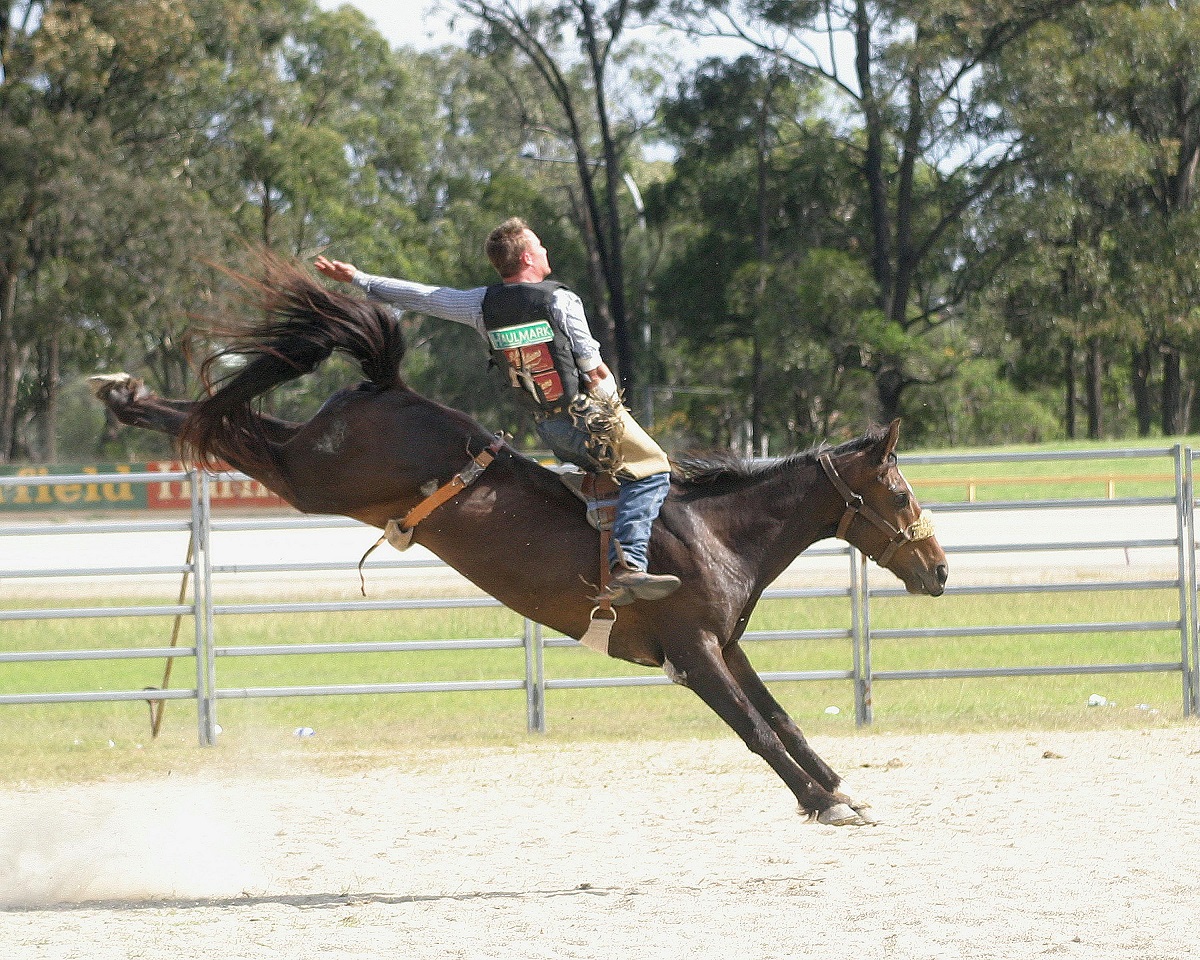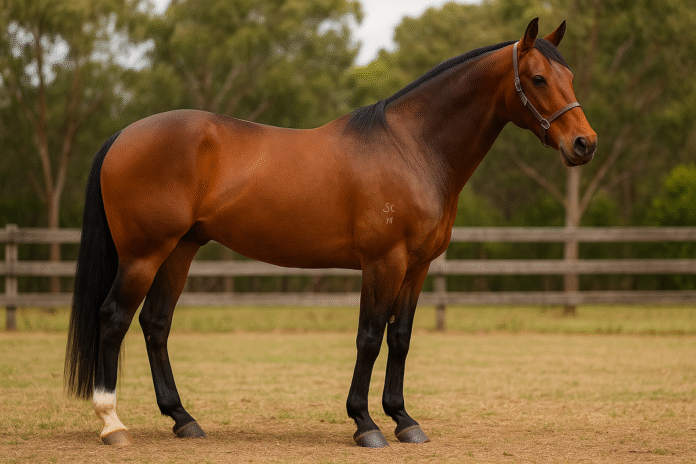Summary: The Australian Stock Horse is a versatile and resilient equine breed developed in Australia for stock work, cattle mustering, and riding. Known for its agility, stamina, intelligence, and balanced temperament, it excels in competitive riding, ranch work, endurance events, and as a family riding horse. With a sturdy build, strong legs, and kind demeanor, the breed is adaptable to various riders, environments, and disciplines—making it an exceptional choice for both working farms and leisure riding.
The Australian Stock Horse is often called the “great all-rounder” of the horse world, and for good reason. This breed is well-known for its strength, intelligence, endurance, and loyalty. Developed and refined over centuries to meet the tough demands of life on Australian cattle stations, the Australian Stock Horse is deeply woven into the history and culture of the country. From its early development by settlers to its modern-day role in sport, leisure, and working life, this remarkable breed continues to impress both experienced riders and casual horse lovers alike. In this article, we’ll take a deep look into the origin, traits, uses, care, and legacy of the Australian Stock Horse, all explained in a way that’s easy to read and understand.
History and Origins
The story of the Australian Stock Horse begins with the arrival of the First Fleet in 1788, when horses were brought to the new colony from various countries, including England, South Africa, and Indonesia. These horses were chosen for their strength, toughness, and ability to survive in rough conditions. Among the early breeds that contributed to the development of the Stock Horse were Thoroughbreds, Arabians, Welsh Mountain Ponies, Timor Ponies, and Cape Horses from the Cape of Good Hope.
As settlers moved inland and established large cattle and sheep stations, they needed a horse that could withstand the harsh Australian climate, cover long distances, carry heavy loads, and help control livestock. Over time, the horses that performed best in these demanding conditions were selectively bred, resulting in a unique breed that combined stamina, agility, intelligence, and a calm nature. These horses became known as Stock Horses, named for their primary role in working with livestock.
By the 20th century, it was clear that the breed had developed a distinct identity. In 1971, the Australian Stock Horse Society (ASHS) was officially formed to preserve, improve, and promote the breed. Today, the ASHS has over 190,000 horses registered and remains the main organization responsible for maintaining the breed’s standards.
Physical Characteristics

The Australian Stock Horse is a medium-sized, athletic animal that displays a strong, muscular build and a balanced appearance. Its physical traits are well-suited for the wide variety of tasks it is expected to perform, from mustering cattle to competing in high-level equestrian events.
Height: Most Australian Stock Horses stand between 14 and 16.2 hands high (a hand equals 4 inches).
Weight: They usually weigh between 450 to 600 kilograms.
Build: The breed is known for a deep chest, powerful hindquarters, a strong back, and well-defined muscles, all of which contribute to their strength and agility.
Head and Face: They typically have a broad forehead, intelligent eyes, and well-shaped ears, giving them an alert and noble look.
Coat and Color: The breed can come in almost any solid color, including bay, black, brown, chestnut, grey, and palomino.
These features make the Australian Stock Horse both attractive and practical, able to handle demanding physical work and look good doing it.
Temperament and Personality
One of the standout qualities of the Australian Stock Horse is its excellent temperament. These horses are not only physically capable but also mentally reliable, which is one of the key reasons they are so popular across a range of activities.
They are known for being calm, intelligent, and willing to work, making them ideal partners for both beginners and experienced riders. Their alert nature and quick response time are essential traits for tasks like herding cattle or competing in fast-paced sports. Despite their high energy levels and strong work ethic, they are also gentle and affectionate, often forming strong bonds with their riders.
Their intelligence and eagerness to learn also mean they respond well to training, picking up new skills quickly and retaining them over time. This makes them particularly useful in disciplines that require precise movements and teamwork between horse and rider.
Uses of the Australian Stock Horse
The Australian Stock Horse is one of the most versatile horse breeds in the world. Its wide range of abilities makes it suitable for many different types of work and sports. Here are some of the main ways the breed is used:
Cattle and Station Work
From the very beginning, these horses were bred for working on cattle stations. They are quick on their feet and can turn sharply, stop suddenly, and change direction with ease — all essential qualities for managing livestock. Their calm attitude also helps when dealing with unpredictable animals in stressful situations.
Campdrafting
Campdrafting is a uniquely Australian equestrian sport that tests a horse and rider’s ability to control a single cow and move it through a pattern of obstacles in a set time. The Australian Stock Horse is considered the best breed for this sport due to its speed, intelligence, and responsiveness.
Rodeo and Sporting Events
These horses also compete in rodeo events like barrel racing, team penning, and time trials. Their speed, agility, and competitive spirit make them perfect for these fast-paced events.
Trail and Recreational Riding
Because of their calm nature and surefootedness, Stock Horses are also very popular for trail riding. Whether it’s a quiet country ride or a long-distance trek, they handle rough terrain with confidence and grace.
Police and Military Work
Thanks to their calm temperament and strong build, Australian Stock Horses are often used by mounted police units for crowd control and public events. They are also used in ceremonial roles by the military.
Dressage, Show Jumping, and Eventing
While they are best known for working roles, many Stock Horses compete in show arenas too. They can perform well in dressage and show jumping, and are increasingly seen in eventing competitions, both in Australia and overseas.
Training and Handling
The Australian Stock Horse is relatively easy to train due to its natural intelligence, strong memory, and desire to please. They are quick learners who enjoy mental and physical challenges, and they respond best to calm, consistent training methods that reward good behavior.
Training usually begins when the horse is young, starting with groundwork to establish trust and respect. From there, they move on to basic riding commands like walking, trotting, cantering, stopping, and turning. As they become more advanced, they can learn to respond to subtle cues and perform more complex tasks such as herding cattle, jumping, or navigating difficult obstacles.
Because of their kind and forgiving nature, these horses are also used in equine therapy and beginner riding schools, helping new riders develop confidence and riding skills.
Caring for the Australian Stock Horse
Although they are tough and adaptable, Australian Stock Horses still need proper care and attention to stay healthy and happy. Here are the basics of caring for them:
Diet: A healthy diet should include fresh pasture grass, high-quality hay, and access to clean, fresh water at all times. Some horses may also need extra feed, grains, or supplements depending on their age, workload, or health.
Shelter and Environment: They need a clean and safe place to live. While they can handle outdoor conditions well, they should still have access to shelter from rain, wind, and extreme sun.
Exercise: These horses love to move and need regular exercise to stay in shape. If they are not being ridden every day, they should be given time to roam in a paddock or field.
Health Care: Routine vaccinations, deworming, dental care, and hoof maintenance are essential. A farrier should trim their hooves every 6–8 weeks to prevent injury and discomfort.
Grooming: Regular brushing helps remove dirt and sweat and keeps their coat healthy. Grooming also allows owners to check for injuries, ticks, or skin conditions.
Australian Stock Horse in Australian Culture
The Australian Stock Horse is more than just a useful animal — it is a true cultural icon. These horses are a symbol of Australia’s rural history, representing the strength, determination, and independence of the people who live and work on the land.
They were famously featured in the opening ceremony of the 2000 Sydney Olympic Games, where over 100 Australian Stock Horses performed in front of a global audience. The breed is also celebrated in movies like The Man from Snowy River, which tells the story of a brave young rider and his fearless horse.
Whether in the outback or on the world stage, the Australian Stock Horse continues to hold a special place in the hearts of Australians.
Conclusion
The Australian Stock Horse is a breed that perfectly combines strength, intelligence, endurance, and heart. Born from a history of survival and hard work, this horse has proven its worth across generations and continues to shine in both traditional and modern roles. Whether you’re looking for a horse to help with farm work, win a ribbon in competition, or simply enjoy a peaceful ride through the countryside, the Australian Stock Horse is a trusted and beloved partner.
Frequently Asked Questions
What is an Australian Stock Horse?
The Australian Stock Horse is a strong, versatile breed developed for cattle work and riding disciplines, known for its agility, stamina, and intelligence.
What are they used for?
They are used for cattle mustering, endurance riding, campdrafting, show events, and as reliable family or trail horses.
What is their temperament like?
They typically have a calm, willing nature, are trainable, alert, and adaptable to various riders and environments.
How tall do Australian Stock Horses get?
They usually stand between 14.2 and 15.3 hands (58 to 63 inches) high.
Are they good for beginner riders?
Yes, their steady temperament, endurance, and trainability make them suitable for beginner and intermediate riders when properly trained.
What colors do they come in?
They appear in various solid colors including bay, chestnut, brown, grey, black, and roan.
How long do they live?
With proper care, Australian Stock Horses typically live between 25 and 30 years.
What size of rider can they carry?
They can comfortably carry adult riders and are suitable for children, teens, and adults depending on the individual horse’s build.
Do they compete in sports?
Yes, they're successful in endurance riding, campdrafting, showjumping, dressage, and general performance events.
How much care do they need?
They require regular feeding, grooming, hoof care, exercise, and veterinary checkups—similar to other working or riding horses.

